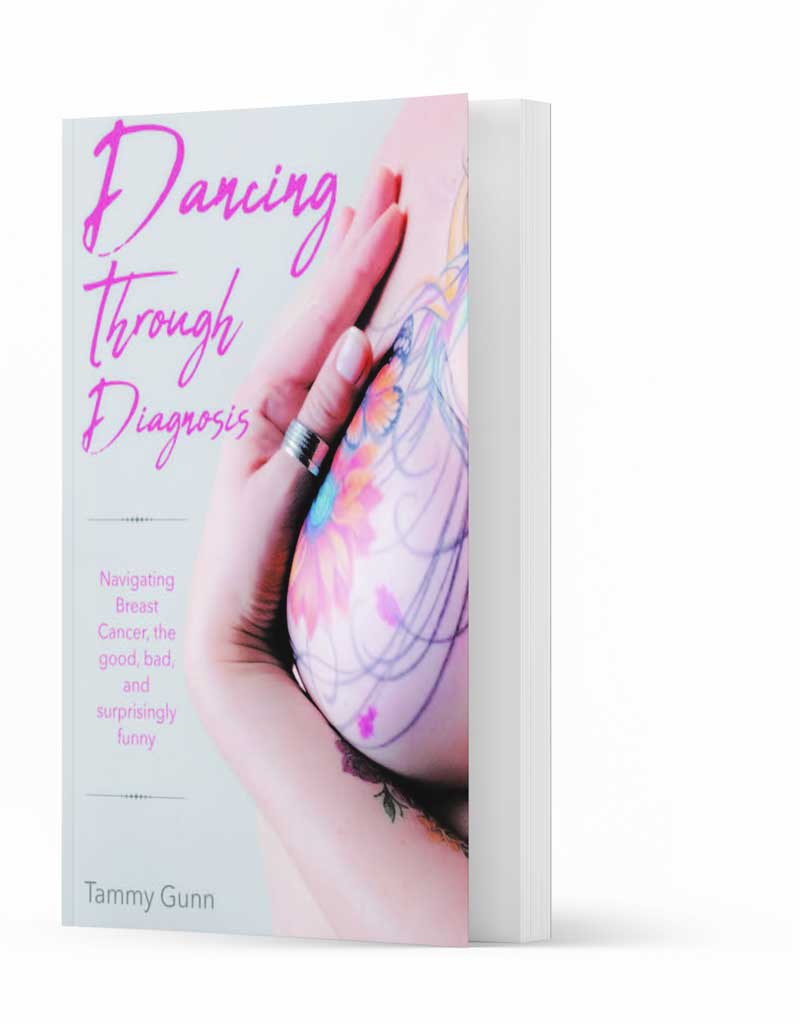'The last thing you need is added stress from work' says author and breast cancer survivor

Tammy Gunn never imagined that at 44 years old, she would be diagnosed with an aggressive form of breast cancer during a global pandemic. The Zumba instructor is now also the author of a newly published book titled Dancing Through Diagnosis: Navigating Breast Cancer; the Good, Bad & Surprisingly Funny! Gunn reflects on her personal experience in the book but is also offering insights for employers and safety professionals on how to support workers facing similar diagnoses.
“Once you’re diagnosed with cancer, it’s like a full-time job that you didn’t sign up for,” Gunn explains, emphasizing the intense physical, emotional, and logistical challenges that come with the disease. “You already have a full-time job. The last thing you need is added stress from work.”

Understanding the Impact on Work
Cancer doesn’t just affect personal health—it inevitably impacts professional life as well. Employees undergoing cancer treatment often need flexibility and understanding from their employers. For many, balancing work with medical appointments, treatment side effects, and recovery is overwhelming. Gunn points out that, in her case, compassionate employer support made all the difference. “An employer needs to be willing to give their employee the time off they need to take care of themselves,” she stresses.
Gunn's story highlights the importance of offering paid medical leave, maintaining open communication, and understanding the unpredictable nature of cancer treatment. Flexibility can mean the difference between an employee feeling supported or overwhelmed.
Providing compassionate support
When an employee is diagnosed with cancer, a compassionate and informed response from their employer is crucial. Gunn emphasizes that a compassionate approach isn’t just about time off; it’s about listening to the employee's needs and adjusting the workload accordingly. “Everything is case by case,” she notes. “If you’re really listening to your employee, you’ll know whether they can handle the workload or if you need to delegate their tasks to others.”
Employers should also be aware of the financial burden that cancer brings, even in countries like Canada with robust healthcare systems. Gunn underscores that for many, especially single-income households, the costs of treatment can add to the stress of the diagnosis. “One of the last things you want to deal with during cancer is financial stress. Employers who can offer continued wages, even if the employee is working fewer hours, are providing immense relief.”
Creating a safe and inclusive workplace
In addition to flexible work arrangements, health and safety leaders can take specific steps to ensure that cancer patients feel safe and supported in the workplace. Employers should consider offering private areas for rest, allowing for flexible work-from-home arrangements, and encouraging regular check-ins to assess how the employee is coping both physically and mentally.
“Having an understanding of the healthcare system and what’s required during treatment is so important,” says Gunn. “In my book, I walk people through the process—from diagnosis to chemotherapy, radiation, and even what to expect afterward. If employers understand what their employee is going through, they can better support them.”
Tailoring support to individual needs
Employers should also be prepared to offer tailored accommodations. Cancer affects individuals differently, and one-size-fits-all solutions won’t always work. Some employees may want to continue working part-time for a sense of normalcy, while others may need extended time off to focus entirely on their health. Listening to each employee and collaborating with them to find a workable solution is essential.
Gunn encourages employers to embrace flexibility. “Some days are better than others. Be open to adjusting schedules or reducing workload on tougher days, and always ensure there’s someone who can help cover tasks when necessary.”
Long-term recovery and reintegration
After treatment, returning to work can be a daunting task for cancer survivors. Gunn reminds employers that recovery doesn’t end when treatment does—physical and emotional healing is a long-term process. “Just because someone has finished chemo or surgery, that doesn’t mean they’re ready to jump back into work at full capacity,” she explains. Allowing phased returns to work or offering extended recovery periods can help employees ease back into their roles.
Gunn’s final piece of advice for health and safety professionals is to cultivate a culture of empathy and awareness. “You’re not alone,” she says. “This is a common disease. The more understanding and supportive you are, the better the experience will be for both the employee and the organization.”
Actionable Steps for Employers
From Gunn’s experience, here are several practical steps employers can take to support employees diagnosed with cancer:
- Offer flexible work options: Provide part-time, remote work, or adjusted schedules to accommodate medical treatments and recovery.
- Be compassionate and listen: Understand the personal nature of each case and make adjustments as needed. Keep open lines of communication.
- Support financially: If possible, offer continued wages or medical leave to alleviate financial stress.
- Create a safe environment: Ensure the workplace is adaptable with rest areas or other accommodations for employees undergoing treatment.
- Provide ongoing support: Offer long-term support for the employee’s transition back to work, and remain flexible as they continue their recovery.
By fostering a compassionate and flexible work environment, health and safety professionals can play a critical role in helping employees navigate the challenges of cancer while maintaining a balance between work and health.





